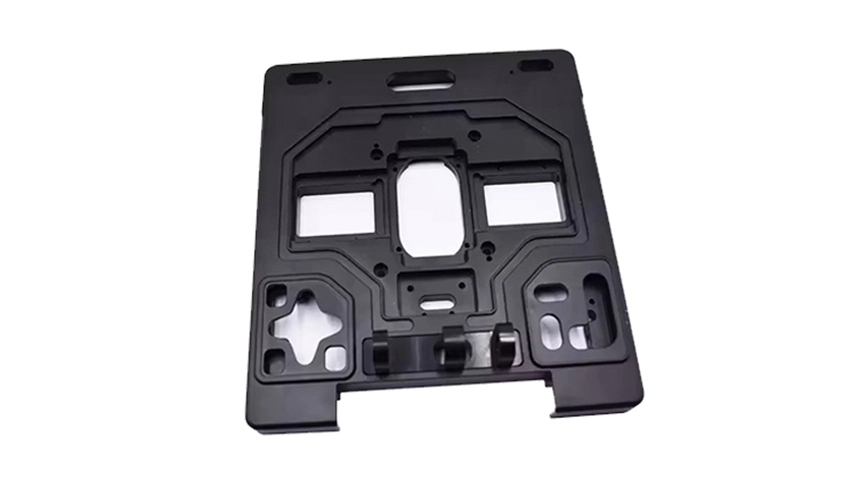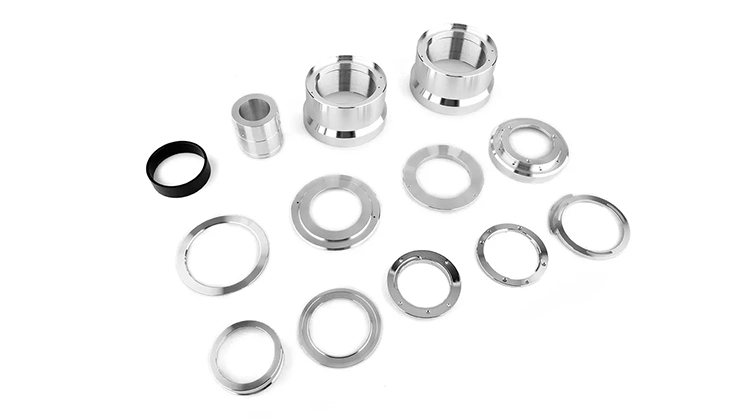Aug 30 , 2024
When it comes to precision machining, CNC (Computer Numerical Control) technology is at the forefront, driving the manufacturing processes of countless industries. Among the various types of CNC machining, CNC milling and CNC turning stand out as two of the most widely used methods. Understanding the differences between these two processes is crucial for anyone involved in manufacturing, engineering, or design. In this article, we'll delve into the key distinctions between CNC milling and CNC turning, helping you make informed decisions for your machining needs.
CNC machining refers to the process of using computers to control machine tools in the manufacturing of complex parts. The technology involves programming a computer to dictate the movements of a machine, allowing for precise and repeatable operations. CNC machines can control a variety of tools, including drills, lathes, mills, and routers, each tailored to perform specific tasks on different materials.
CNC milling is a machining process that utilizes rotary cutters to remove material from a workpiece, creating the desired shape. In milling, the workpiece is typically fixed in place while the cutting tool rotates and moves along multiple axes to shape the material. CNC milling machines are equipped with a variety of tools and can perform various operations such as face milling, peripheral milling, and more.
Components of a CNC Milling Machine:
A typical CNC milling machine consists of a base, column, spindle, cutting tools, and a worktable. The machine operates in multiple axes (usually 3 to 5) to create complex geometries and intricate designs.
Types of Milling Processes:
Face Milling: The cutting tool's axis is perpendicular to the surface of the workpiece.
Peripheral Milling: The cutting tool's axis is parallel to the surface, and the cutting edges are on the tool's periphery.

CNC turning, on the other hand, involves the rotation of the workpiece while a cutting tool moves along its surface to remove material. This process is typically used to create cylindrical parts and involves a lathe, where the workpiece is mounted on a spindle and rotated at high speed.
Components of a CNC Turning Machine:
A CNC turning machine, often referred to as a lathe, includes components such as the spindle, chuck, turret, and tailstock. The cutting tool, which is usually stationary, is precisely moved along the rotating workpiece to shape it.
Types of Turning Processes:
Facing: The cutting tool moves perpendicular to the workpiece's axis, creating a flat surface.
Threading: A process where a helical groove is cut into the surface of the workpiece.

Understanding the operational distinctions between CNC milling and CNC turning is essential for selecting the appropriate process for your project.
Operational Differences:
In milling, the cutting tool rotates while the workpiece remains stationary, whereas in turning, the workpiece rotates while the cutting tool remains stationary.
Tooling Differences:
Milling machines utilize a wide array of cutting tools to create various shapes, while turning machines typically use single-point cutting tools designed for cylindrical parts.
Workpiece Movement:
CNC milling involves moving the cutting tool along multiple axes, whereas CNC turning relies on the rotation of the workpiece with linear tool movement.
CNC milling is widely used across numerous industries due to its versatility and precision.
Industries That Use CNC Milling:
Aerospace, automotive, medical devices, and consumer electronics are just a few industries that benefit from CNC milling.
Types of Parts Created:
CNC milling is ideal for creating complex shapes, such as engine components, surgical instruments, and intricate housings for electronic devices.
CNC turning is the go-to process for producing cylindrical components efficiently and accurately.
Industries That Use CNC Turning:
Automotive, oil and gas, aerospace, and heavy machinery industries commonly utilize CNC turning for parts like shafts, fasteners, and bushings.
Types of Parts Created:
CNC turning excels in producing symmetrical objects like pulleys, bolts, and threaded fasteners.
Precision and Versatility:
CNC milling allows for the creation of complex and precise geometries, making it ideal for intricate designs.
Ideal for Complex Shapes:
Milling machines can easily handle multi-axis operations, making them suitable for creating parts with intricate contours and cavities.
Efficiency in Cylindrical Parts Production:
CNC turning is highly efficient for producing round or cylindrical parts, particularly in large volumes.
Cost-Effectiveness:
For high-volume production of cylindrical parts, CNC turning is often more cost-effective than milling.
Potential Limitations:
While versatile, CNC milling may not be as efficient as turning for producing cylindrical parts and can be limited by the complexity of the setup.
Cost Considerations:
CNC milling can be more expensive than turning due to the complexity of the machinery and the need for multi-axis movement.
Limitations in Part Geometry:
CNC turning is primarily suited for cylindrical parts, making it less versatile than milling for complex shapes.
Cost Considerations:
While cost-effective for cylindrical parts, turning can become expensive when dealing with complex or non-symmetrical parts that require multiple setups.
Choosing between CNC milling and CNC turning depends on several factors, including the desired part geometry, production volume, and material type.
Factors to Consider:
If your project involves complex, non-cylindrical parts, CNC milling is likely the better choice. However, for high-volume production of cylindrical components, CNC turning is often more efficient.
Suitability for Projects:
Evaluate the specific requirements of your project, such as the material, desired tolerances, and complexity, before deciding on the machining process.
CNC milling and CNC turning are both indispensable processes in the world of precision manufacturing. While they share some similarities, their differences in operation, tooling, and applications make them suitable for distinct types of projects. By understanding these differences, you can better choose the right CNC process to meet your specific needs, ensuring the highest quality and efficiency in your manufacturing endeavors.